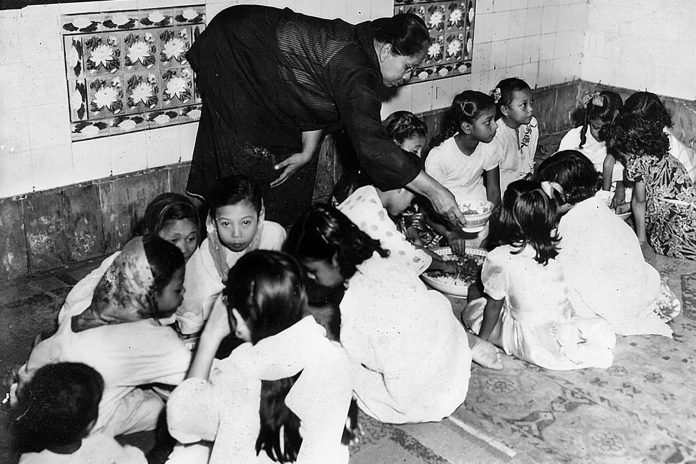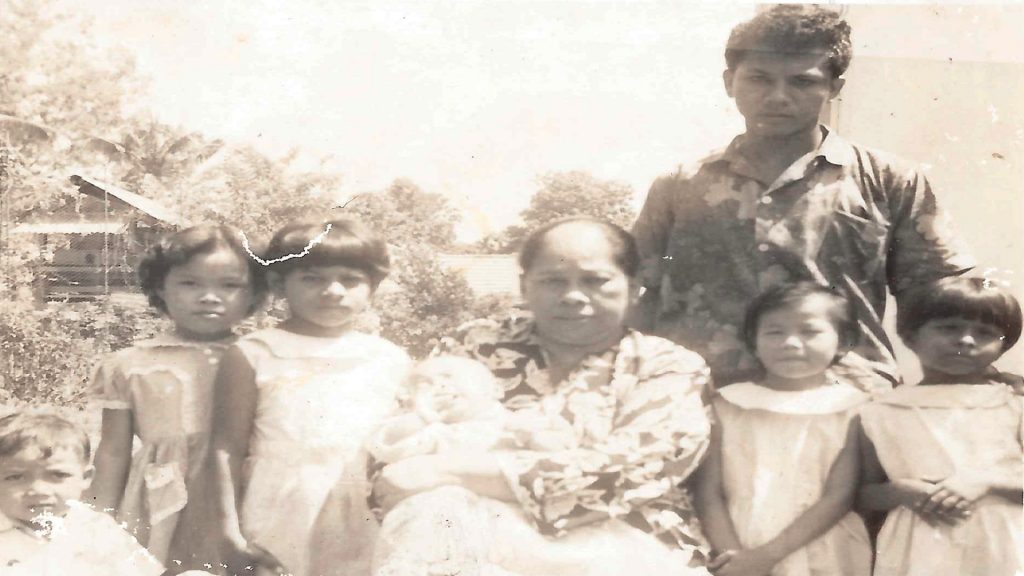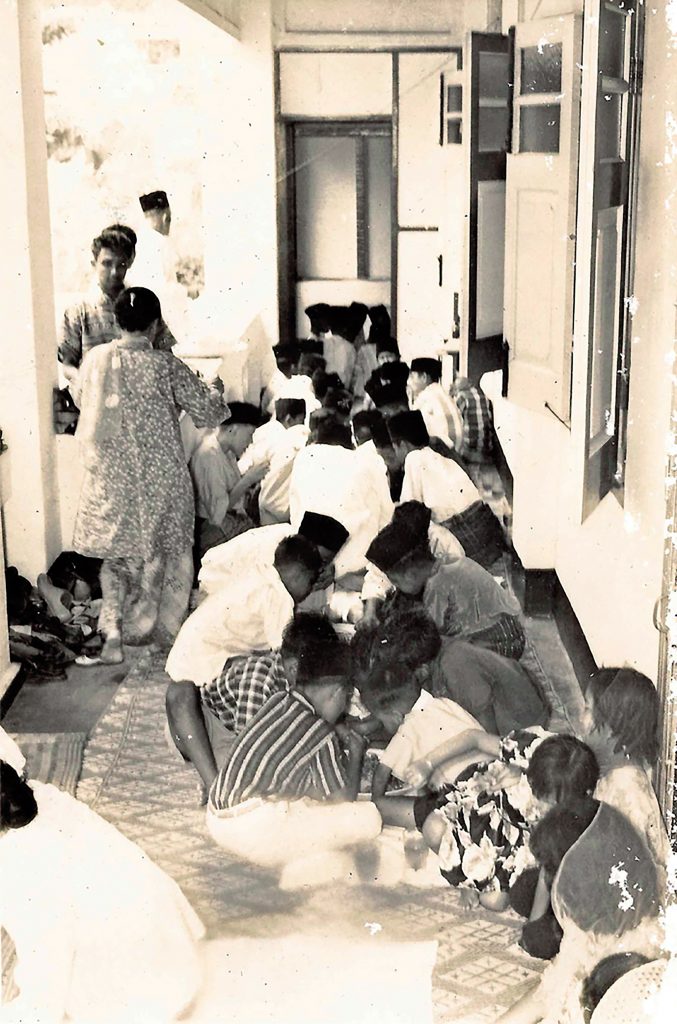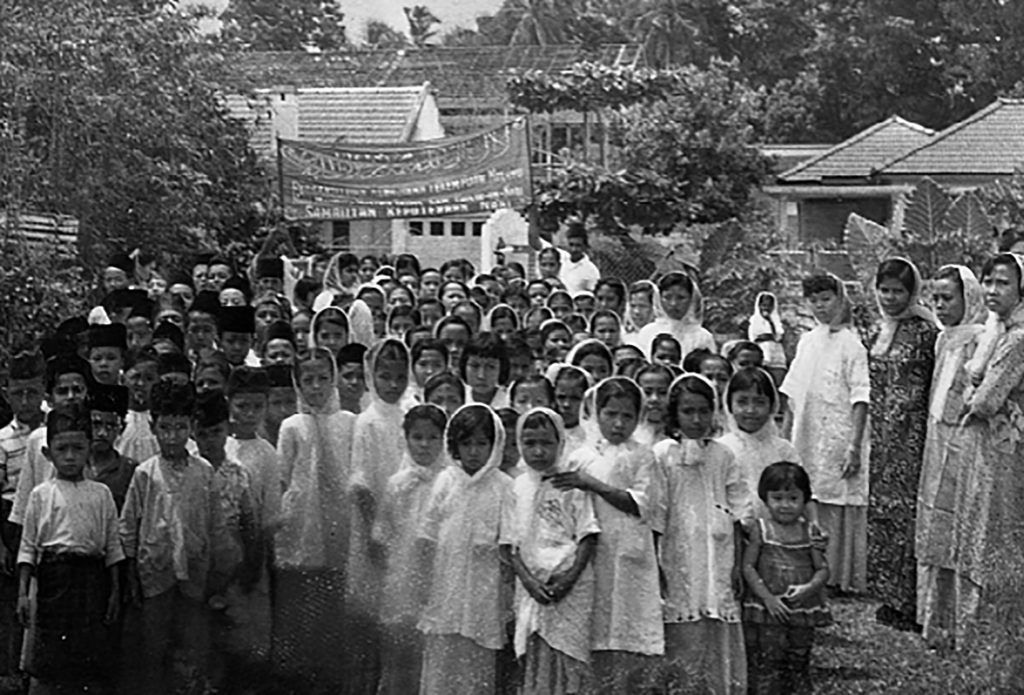
The life and times of Che Zahara binte Noor Mohamed
By Khong Swee Lin
It was certainly quite an age – the Cold War, the Suez Crisis, the Sputnik satellite launch, the discovery of the DNA double helix, the invention of the polio vaccine, John Wayne, Sinatra, Elvis, self-governance for Singapore… and Che Zahara binte Noor Mohamed.
Often dismissed as “turbulent”, 1950s Singapore was not all “riots and communist mayhem”. Emerging out of the ashes of World War II, the newly minted phoenix firstly had to grapple with postwar issues of the rice bowl – food and housing shortages and rationing for instance – so much so that many had to resort to the wryly termed “B.M.A.”, not the “British Military Administration” interim government, but the “Black Market Administration”.
Despite the struggle for survival and subsequent turmoil, it was undoubtedly a time of, and for, great challenges. Women (pray, who else?) staunchly rose to the occasion. Indeed, as Nirmala PuruShotam wrote in “Silent Witnesses: The Woman in the Photograph” in Past Times: A Social History of Singapore (Times Editions, 2003), “Civil society was alive and kicking in the Singapore of the late 50s…” perhaps aided in no small measure by one of Singapore’s early reformers whose name has been rightly recorded, but only recently, duly lauded.
“In no other place – not even in Hollywood – is the divorce rate so high as this!” lamented Shirin Fozdar of the Singapore Council of Women, in an article in The Straits Times of January 29, 1954. Though without renowned movie stars or even starlets in the offing, the island had, it seemed, begun to adopt traits reminiscent of the foibles of glamorous Hollywood with unglamorous “Hollywood”-style short-lived marriages on the rise.

Che Zahara binte Noor Mohamed took such “outrage” in her stride. Going straight for the jugular, she addressed issues of marriage reform in her setting up of the Malay Women’s Welfare Association (MWWA) as early as 1947. Known also as “Kaum Ibu”, the protector of women and children, she ran a tight ship at the association’s premises, her home, which intriguingly enough was at Desker Road – a road named after Andre Desker, a butcher, and which, in the 50s, was known to be a red light district.
While the area might have resounded to the bleating of sheep in earlier times, the association sheltered over 300 women and children – abandoned wives who without any maintenance, desperately turned to prostitution, child brides married off at a mere 13 years of age to men in their mid-20s, then discarded in the blink of an eye, teenage prostitutes – all lambs nearly led
to slaughter.
A former office-bearer of the Angkatan Wanita Sedar (the League of Aware Women), in the Malay Nationalist Party, Che Zahara was no stranger to controversy. Faced with the constant spectacle of fractured families with women at the losing end, she ceaselessly sought to better the
lot of Muslim women, especially in issues pertaining to divorce and to the abuse of the practice of polygamy in Muslim marriages.
In the former situation, a Muslim man could easily obtain a divorce if, for instance, his wife had not borne him a child; these were “indiscriminate divorces” in Che Zahara’s view. Meanwhile, the latter situation enabled a Muslim man to enter into a subsequent marriage without the knowledge of his present wife. Or, worse still, a woman could enter into a contract of marriage blissfully unaware of the existence of a first wife.
Unflinchingly protective of Muslim women’s welfare, the diminutive, but indefatigable Che Zahara battled on, to redress what was perceived to be moral turpitude or at the very least, to highlight men’s prevailing condescension towards the status of Muslim women. It was no picnic indeed.
Perhaps her loved ones played a part in developing her conviction, inner strength and fortitude. She was, after all, a daughter of Noor Mohamed, one of the first men in the Malay community of Singapore to learn the English language and who counted amongst his peers, Singapore’s Sultan Ali and Sultan Abu Bakar of Johor. Dubbed “Inche Pantalon” or “Mr Pantaloon”, as he preferred to wear Western-style trousers instead of traditional garb, Noor Mohamed worked as a translator, adviser and mediator for the British and was highly regarded. In addition, Che Zahara’s husband, Haji Mohamed Nazeer Alal Mohamed Russull, a Ceylonese businessman, was a strong advocate of social responsibility. Both men were certainly enlightened, quite unlike their brethren, in what was then essentially a patriarchal society.

Thus, at the Muslim Women’s Welfare Association’s Desker Road premises, Che Zahara didn’t provide tea and sympathy – she ensured that her charges received religious education and skills training as well, most of it paid out of her own funds. She did manage to raise a princely sum of $500,000 in a well-crafted appeal to “brothers and sisters of all nations”. Her programme of reform included the staging of plays aimed at discouraging child marriages. Her efforts to discourage such marriages between teenage brides and older men finally came to fruition in the shape of the Marriage Bill, also known as the Laycock Bill – but at a price.
Politician and lawyer John Laycock, Singapore’s Legislative Councillor, introduced the Marriage Bill in August 1950, to restrict marriages to parties aged 16 years and above, borne out of the flames of the Maria Hertogh saga (see “Highlights”). Public outcry from certain quarters eventually caused the bill to be amended to exclude its application to Muslims – not what Che Zahara envisaged.
Galvanised into action, she organised a public meeting to be held at the historic Beach Road premises of the Singapore Volunteer Corps (popularly known as Beach Road Army Camp, now sold and renamed “South Beach” – a brand-new residential and commercial complex in the city), on October 15, 1950. Well attended by 300 women and 100 men, they included Legislative Councillors Mr Lim Yew Hock, who eventually became Singapore’s second Chief Minister on June 8, 1956, and Mr Sardon Jubir, the first local to be appointed to the Colonial Legislature, subsequently to become Malaysian Minister of Health, of Works and Communications and Governor of Penang from 1975 to 1981.

While the outcome of that meeting failed to remove the amendment to the bill, it was a significant step forward for women, to voice their concerns publicly and to make themselves heard. It was not long before a major development ensued. The wife of Sutan Sjahrir, the first Prime Minister of Indonesia in 1945 and associate of statesman Mohammad Hatta, had made a stirring speech on the progress of Indonesian women’s rights to an audience of Muslim men and women in October 1951. It so moved Che Zahara that she marshalled forces, so to speak, to form what was to become the Singapore Council of Women (SCW) to advance women’s causes in Singapore. Shirin Fozdar became the honorary secretary, and Che Zahara, one of its vice presidents.
With a larger, multiracial network and greater resources, it aimed at uniting women in Singapore, functioning as an “umbrella organisation”, furthering their educational, economic and social status, ensuring justice and advancing women’s welfare as embodied in the (UN) Declaration of Human Rights Charter. Tie-ups with other international women’s organisations were also necessary to keep the world informed of the local situation and to keep the locals informed. Indeed it may be said that the SCW was perhaps the first “Singaporean” women’s organisation, and there were 2,000 members by 1955.
Ever ahead, Che Zahara had, as early as 1951, advocated the formation of the Syariah Court, “to act”, as she explained, “as a deterrent against indiscriminate divorces by Muslims”. Her dream came true in its establishment under the provisions of the 1957 Muslim Ordinance, which amongst other objectives, controlled and regulated the registration of Muslim marriages and divorces until the Administration of Muslim Law Act repealed the Ordinance in 1966, imposed a minimum age for Muslim marriage (16 years), and regulated polygamous marriages. The act was subsequently amended in 2009, raising the minimum age of marriage to 18 years.

Through the 1950s, the SCW had toiled for the protection of women and for legislation to provide for monogamous marriages in Singapore. In fact, they had a hand in the drafting of the 1954 Prevention of Bigamous Marriages Ordinance, seeking to raise the minimum age of marriage to 16 years and to void bigamous (non-Muslim) marriages, supported by Legislative Council members John Laycock and Desaratha Raj.
With self-governance looming on the horizon, the People’s Action Party (PAP), recognising the importance of women’s votes, adopted the campaign slogan “one man one wife”. So the SCW finally decided to weigh in with them. Promising to improve women’s status, the PAP swept to victory in 1959. Women came out to vote, as voting was compulsory, and the SCW didn’t drag their feet in getting the victors to fulfil their promises. Fulfilled in March 1960, the Women’s Charter Bill, incorporating provisions of the 1954 bill, became law in September 1961, providing for monogamous (non-Muslim) marriages, protecting the rights of women and girls in Singapore, regulating the relationships between husband and wife, parent and child.
Perhaps what was so amazing about the SCW was its unswerving dedication to women’s causes, protecting and promoting their rights, attempting to deal with basic problems then facing women (polygamy being one that cut across the racial divide), and pursuing reform via legislation.
Far from being regarded as a society for ladies of leisure, it remained faithful to its objectives. It was even approached by the Department of Social Welfare “to consider sponsoring a girls’ club”. Rising to the occasion, SCW obtained donated equipment and began operations at the Joo Chiat Welfare Centre. Volunteers taught the girls English, dialects, sewing, cookery and other skills. The response was overwhelming.
In 2014, the late Che Zahara was inducted into the Singapore Council of Women’s Organisations’ “Hall of Fame”, recognised as a “pioneering champion of the rights of women and children”, a fitting tribute to a lady whose exceptional qualities bloomed, true to her name, Zahara – a fine blossom indeed.
For more stories and photos, check out Asian Geographic Issue 113.










